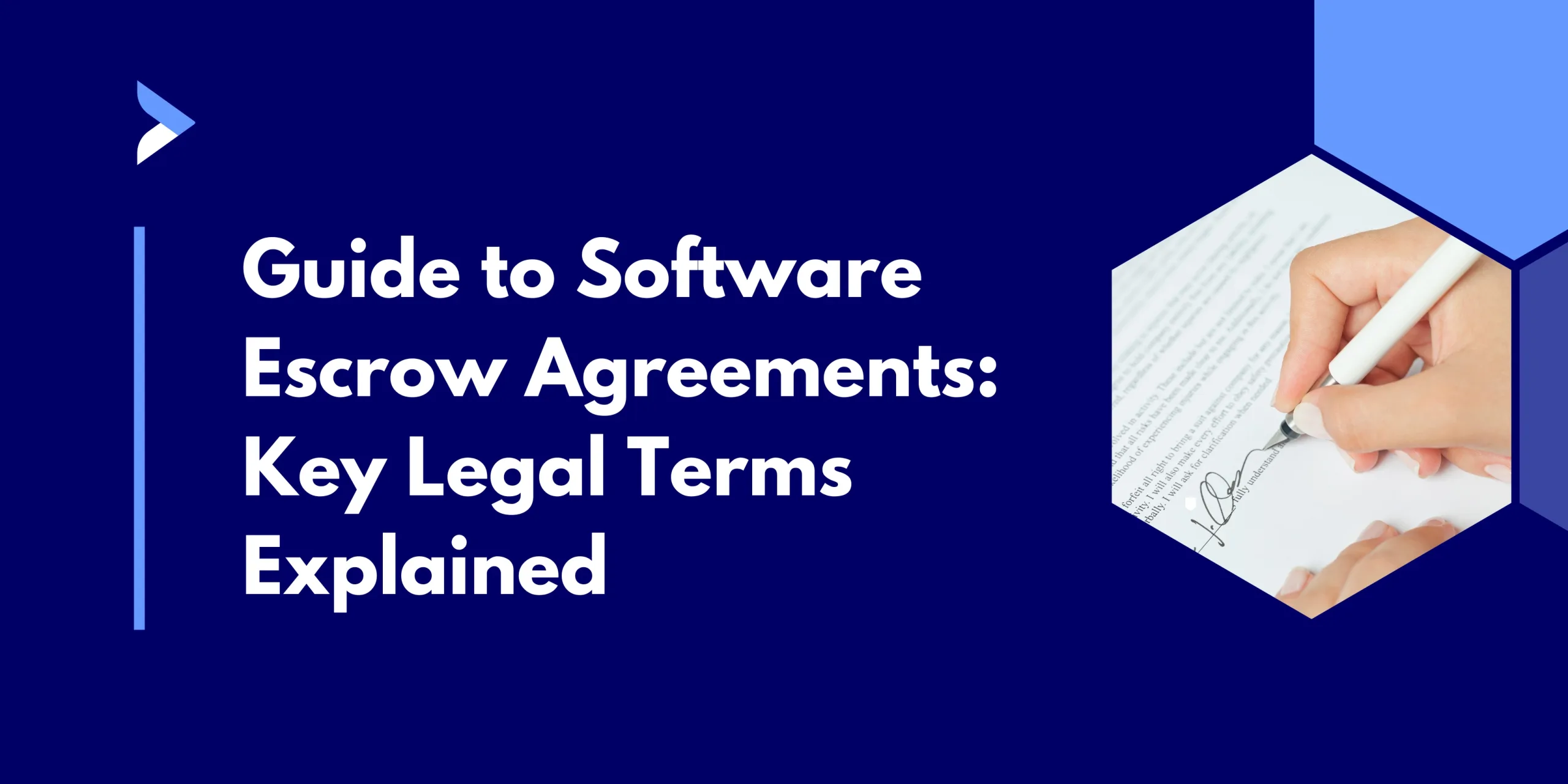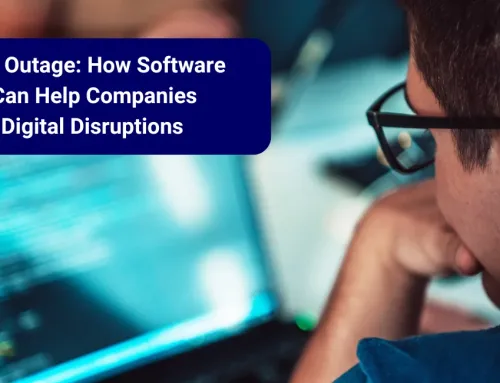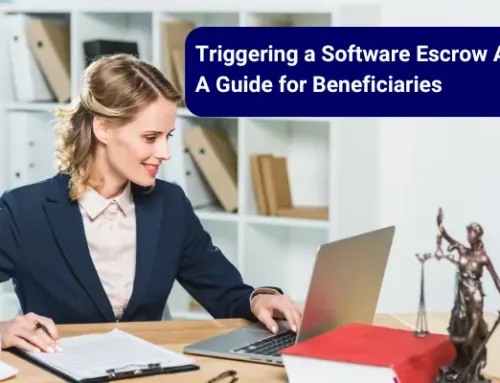Guide to Software Escrow Agreements: Key Legal Terms Explained
Introduction
For many businesses, software is a critical part of their 3rd party software licence agreements. Ensuring long-term access to and availability of software applications is essential, particularly when relying on third-party providers for critical business processes. A software escrow agreement provides a structured and secure way to safeguard business continuity by ensuring access to essential software components, cloud environments or data when needed.
These agreements outline the responsibilities of all parties involved and define the conditions under which software escrow materials can be accessed. Understanding the key legal terms used in software escrow agreements helps businesses and developers navigate these contracts with confidence. This guide breaks down the essential phrases and definitions to ensure clarity and transparency in your escrow arrangements.
What is a Software Escrow Agreement?
A software escrow agreement is a legal arrangement between three parties:
- The Depositor – The software vendor or developer.
- The Beneficiary – The company or individual that would receive access to assets upon release, typically the end user or partner of the software company
- The Escrow Agent – A neutral third party responsible for securely storing the software escrow and related materials.
The purpose of a software escrow agreement is to ensure that if the Depositor can no longer support the software, the Beneficiary can access the necessary materials such as source code, deployment scripts and other documentation to continue using and maintaining it.
To find out more about Software Escrow click here.
Key Legal Terms and Their Meaning:
Depositor
This is the software vendor that owns the intellectual property rights and deposits materials such as source code and related software assets into escrow. The Depositor grants certain usage rights for the Beneficiary, in case of situations such as critical service disruption or bankruptcy of the software vendor.
Beneficiary
The Beneficiary is the company or individual and typically an end user who depends on the software for business operations. If certain release conditions are met, the Beneficiary can gain access to the deposit materials.
Escrow Agent
A software escrow agent is a neutral third party that securely stores the software’s source code, documentation, and other critical materials. The escrow agent ensures compliance with the agreement and releases materials to the Beneficiary only under specific conditions.
Deposit Materials
These are the software assets usually stored in a software escrow arrangement, including:
- Source Code – The human-readable programming code used to develop the software.
- Documentation – User manuals, system architecture guides, and deployment instructions.
- Database Schema – The structure of the software’s database.
- Encryption Keys – If the deposit materials contain encrypted data, these keys are required for access and are typically also held by the escrow agent.
It’s crucial that the agreement clearly defines what constitutes the Deposit Materials to ensure all necessary components are included.
Software Escrow
A type of software escrow that specifically involves storing the source code, ensuring continued functionality in case the vendor cannot provide support. Learn more.
SaaS Escrow
A software escrow arrangement designed for cloud–hosted software applications (SaaS escrow). A SaaS escrow service can provide access to code as well as items such as scripts, images, client data or a cloud-hosted application’s operating environment if their provider ceases operations. Learn more.
Verification Test
A process carried out by the software escrow agent to provide assurance that the deposited materials are complete, functional, and capable of being compiled or deployed into a working system. There are varying levels of testing available depending on how the product is hosted and beneficiary requirements.
File Integrity Test
A basic test to ensure the deposited files are accessible and are free of viruses. This test does not verify the usability of the software.
Event of Default
An “Event of Default” triggers the release of the Deposit Materials to the beneficiary. Common events of default include:
- The depositor’s bankruptcy or insolvency
- Failure to maintain or support the software as agreed
- Breach of the license agreement
- Ceasing business operations
The agreement should clearly define these events to avoid ambiguity and potential disputes.
Release Conditions
This section outlines the specific circumstances under which the escrow agent is authorised to release the Deposit Materials to the beneficiary. It typically includes:
- Notification procedures
- Timeframes for the depositor to object to the release
- Dispute resolution mechanisms
A well-drafted release condition clause helps ensure that the beneficiary can access the materials when truly necessary while protecting the depositor’s intellectual property rights.
Third-Party Components
These are software libraries, APIs, or services incorporated into the software but owned by an external entity. If the software escrow contains third-party components, the Beneficiary may need to obtain separate licenses to use them following a release event.
License Agreement
A separate contract that defines how the Beneficiary can use the software. A software escrow agreement often complements the software license agreement, ensuring that the Beneficiary has access to the software’s inner workings if needed.
Intellectual Property (IP) Rights
Legal rights over the software, including patents, copyrights, and trade secrets. The software escrow agent does not own the software but ensures that access is provided under specific conditions.
Fees and Payment
The agreement should clearly state who is responsible for paying the escrow agent’s fees. This may be:
- The depositor
- The beneficiary
- Shared between both parties
It’s important to outline the fee structure, payment schedules, and any provisions for fee increases.
Termination
The termination clause outlines how and when the escrow agreement can be ended. Key points include:
- Notice periods for termination
- Conditions for early termination
- Handling of deposited materials upon termination
Indemnification and Liability
These clauses limit the escrow agent’s liability and may require the depositor and beneficiary to indemnify the agent against certain claims. Typical provisions include:
- Caps on the escrow agent’s liability (This can typically range from £0 – £5 million depending on the escrow agent. Escrow London provides £2.5 million liability as standard for certain events. This may be extended up to £5 million.)
- Exclusions for certain types of damages (e.g., indirect or consequential losses)
- Indemnification for third-party claims related to the deposited materials
Dispute Resolution
A well-crafted dispute resolution clause can help avoid costly litigation. This may include:
- Mandatory mediation or arbitration procedures
- Choice of law and jurisdiction
- Timeframes for resolving disputes
Jurisdiction of Agreement
The governing law of the software escrow may be important to the parties involved. Escrow London can provide software escrow agreements under many jurisdictions including UK, USA, Canada, Australia, EU, South Africa, Singapore and others.
Why Software Escrow Matters
A software escrow agreement ensures that businesses relying on third-party software are not left vulnerable if the vendor ceases operations. It provides:
- Business Continuity – Protecting against vendor failure.
- Risk Mitigation – Ensuring access to mission-critical software.
- Compliance & Security – Safeguarding proprietary technology.
Leading providers like Escrow London provide software escrow services, ensuring businesses can operate securely and efficiently.
Final Thoughts
Understanding the key terms in a software escrow agreement is essential for businesses that rely on third-party software solutions. By demystifying legal jargon, companies can confidently understand their escrow agreements and ensure continued access to critical software assets.
To understand more about Software Escrow Agreements and how Escrow London can help click here.
To keep up to date with Escrow London follow us on LinkedIn.








